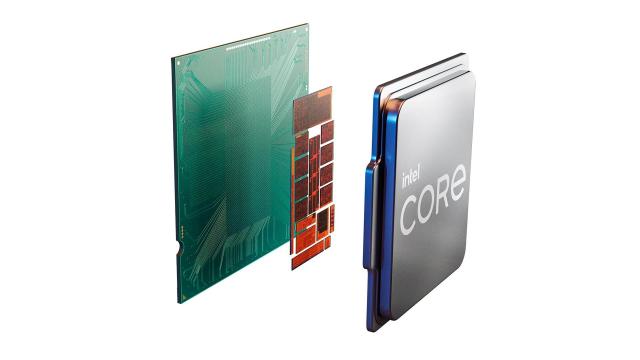Intel’s next generation of desktop processors is rumoured to arrive later this year, and if the latest leak is accurate, these chips could provide significant gains over the company’s outgoing ones. However, they might not be enough to topple AMD and its upcoming Zen 4 processors.
The rumoured Intel Core i9-13900 was spotted in the SiSoftware Sandra benchmark database, as VideoCardz reports. Of all the info leaked about the processor, the headliner is its 24 cores (with 32 threads), which are split between eight performance cores and 16 efficiency cores. Compared to last year’s Core i9-12900, the upcoming 13th Gen chip has double the efficiency cores for faster performance at lower power levels.
Part of a forthcoming 13th Gen “Raptor Lake” generation based on an enhanced 10-nanometre process (Intel 7+), the Core i9-13900 will gain a 20% larger L3 cache, double the L2 cache size (2MB per core for big core and 4MB per cluster of 4 cores on small cores), and support faster DDR5 memory at up to 5600 MT/s (up from 4800 MT/s).
Here is a breakdown of the enhancements:
- 8P + 16E = 24 cores (32 threads)
- Support for up to DDR5-5600 memory
- 20% larger L3 cache (up to 36MB )
- 2x larger L2 cache (up to 32MB)
- No Support For AVX-512
- Thunderbolt 4
Although more of a refresh than a redesign of the current Alder Lake processors, the Core i9-13900 and its 13th Gen siblings should deliver significant performance gains thanks to those beefed-up specs. Based on the SiSoftware numbers (which you should take with some scepticism), the Raptor Lake flagship chip managed 33% to 50% faster speeds than the current Core i9-12900 in the arithmetic (integer and floating-point) benchmarks.

Most impressive is that the chip was running at a max clock speed of 3.7 GHz for the P-cores and 2.76 GHz for the E-cores, which is significantly lower than Alder Lake’s 5.0 GHz P-cores and 3.8 GHz E-cores. Even at these lower clock speeds, the Core i9-13900 topped AMD’s Ryzen 9 5900X (Zen 3) processor.
The performance delta on other benchmarks wasn’t nearly as wide, with the vectorized/SIMD test suggesting 5% to 8% better performance on Raptor Lake. That wasn’t enough of an improvement to put Intel above AMD in this one.

Overall, these benchmarks are a mixed bag. The massive performance gains on the ALU/FPU test suggest 13th Gen chips can theoretically squeeze out considerably faster speeds at lower power than 12th Gen processors, and even compete against AMD’s current best when running non-SIMD tests. Those increases in L2 and L3 cache certainly help the fight.
However, while these benchmarks should be taken with a grain of salt, it’s safe to say the 13th Gen processor won’t move the needle as far on every test. At least, not with these desktop chips. If these specs are accurate, I’m more interested in the laptop variants, given the increase in efficiency cores, which could enable longer runtimes on mobile systems.
Intel’s 13th Gen Core desktop processors are expected to launch by the end of the year, likely in the fall. When they arrive, they will compete against the highly-anticipated AMD Ryzen 7000 (Zen 4) processors, 5nm chips that promise significant generational performance-to-watt gains over Ryzen 5000.

Leave a Reply